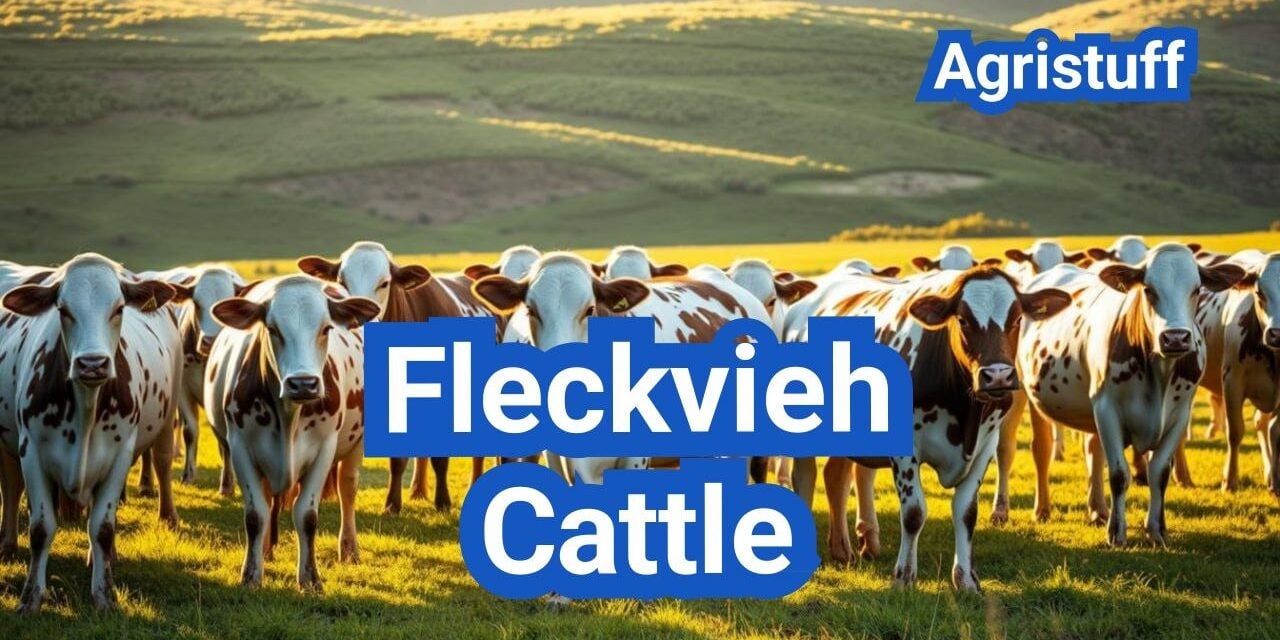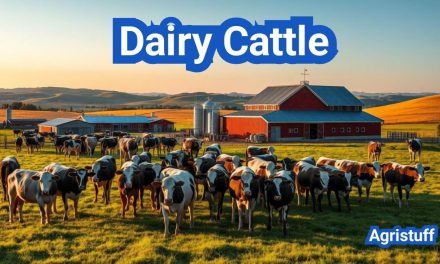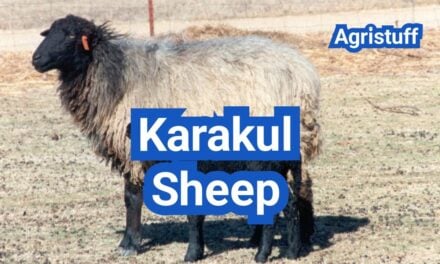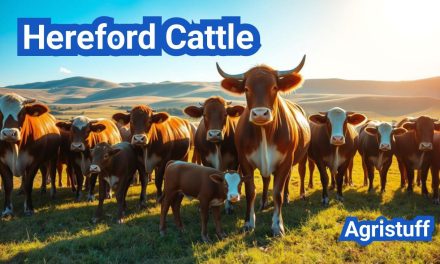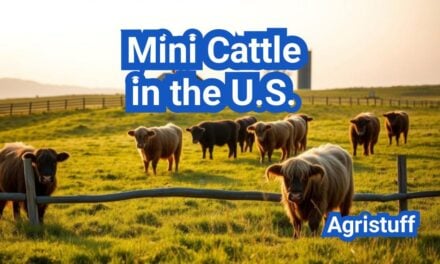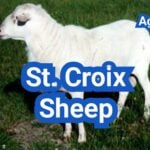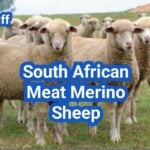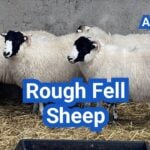The Fleckvieh breed has gained popularity in the United States due to its dual-purpose genetics, offering a unique combination of dairy and beef production.
Originating in Europe, this breed has been used for crossbreeding, absorption crossing, and three-way crossing to improve dairy farms’ overall performance.
With its rich history and distinct characteristics, the Fleckvieh breed is an attractive option for farmers seeking to enhance their dairy and beef production.
Key Takeaways
- Dual-purpose genetics of Fleckvieh breed
- Crossbreeding and its benefits for dairy farms
- Origin and history of the Fleckvieh breed
- Characteristics of Fleckvieh cattle
- Potential for improved dairy and beef production
The Origin and History of Fleckvieh Cattle
Bavaria, Germany, is the birthplace of Fleckvieh cattle, a breed that has been shaped by centuries of careful breeding and selection. The history of Fleckvieh cattle is deeply intertwined with the agricultural practices of Bavaria, reflecting the region’s commitment to producing high-quality, dual-purpose cattle.
Bavarian Roots and Development
Fleckvieh cattle were developed in the 19th century with the goal of creating a robust, versatile breed capable of thriving in Bavaria’s varied climate and agricultural conditions. The breed’s early development involved the crossing of local cattle with Simmental and Yellow Swiss breeds, introducing desirable traits such as improved milk production and beef quality.
Connection to Simmental and Yellow Swiss Breeds
The influence of Simmental and Yellow Swiss breeds on Fleckvieh cattle is evident in their physical characteristics and production capabilities. Simmental cattle, known for their rapid growth rate and high-quality beef, contributed significantly to the Fleckvieh breed’s development. Similarly, the Yellow Swiss breed added valuable traits related to milk production and overall hardiness.
The genetic legacy of these breeds can be seen in the following table, which highlights key characteristics of Fleckvieh, Simmental, and Yellow Swiss cattle:
| Breed | Milk Production (kg) | Beef Quality | Hardiness |
|---|---|---|---|
| Fleckvieh | 7,000-9,000 | High | Excellent |
| Simmental | 6,000-8,000 | Very High | Good |
| Yellow Swiss | 8,000-10,000 | High | Excellent |
Historical Significance in European Agriculture
Fleckvieh cattle have played a significant role in European agriculture, particularly in Germany and Austria, where they were valued for their milk and beef production. The breed’s adaptability and productivity made it an ideal choice for farmers seeking to maximize their output while maintaining high standards of quality.
The historical significance of Fleckvieh cattle extends beyond their production capabilities, as they have also contributed to the development of other breeds and agricultural practices in Europe.
Understanding Fleckvieh Cattle Characteristics

Understanding the characteristics of Fleckvieh cattle is crucial for farmers looking to optimize their agricultural operations. Fleckvieh cattle are known for their moderate frame size, muscular build, and docile temperament, making them a versatile choice for both milk and beef production.
Physical Appearance and Color Patterns
Fleckvieh cattle are characterized by their distinctive color patterns, which can vary but often include a combination of red and white or black and white. Their coats are typically sleek, and their coloration can range from a solid color to a mix of patches.
The breed’s physical appearance is also marked by a muscular build and a moderate frame size, which contributes to their overall strength and productivity.
Size and Weight Specifications
Fleckvieh cattle are known for their moderate size and robust build. The size and weight of Fleckvieh cattle can vary depending on factors such as genetics, nutrition, and management practices.
| Category | Average Weight | Height at Withers |
|---|---|---|
| Cows | 500-700 kg | 130-140 cm |
| Bulls | 900-1200 kg | 140-150 cm |
Temperament and Behavioral Traits
Fleckvieh cattle are renowned for their docile temperament, making them easy to handle and manage. Their calm nature contributes to their overall productivity and makes them a pleasure to work with.
The breed’s behavioral traits also include a strong instinct for grazing and a robust health profile, which are essential for thriving in various agricultural settings.
The Dual-Purpose Advantage of Fleckvieh Cattle
Fleckvieh cattle offer a compelling dual-purpose advantage, combining the benefits of milk and beef production in one breed. This versatility is making them increasingly popular among farmers who seek to diversify their agricultural output without compromising on quality or efficiency.
Milk Production Capabilities
Fleckvieh cattle are renowned for their impressive milk production capabilities. They are known to produce high volumes of milk with excellent quality, making them suitable for dairy farming. The average milk yield per lactation is around 7,000 kg, with a fat content that is favorable for cheese production.
Milk Production Statistics:
| Lactation Period | Average Milk Yield (kg) | Fat Content (%) |
|---|---|---|
| 305 days | 7,000 | 4.0 |
| 365 days | 8,000 | 4.2 |
Beef Performance and Quality
In addition to their dairy capabilities, Fleckvieh cattle are also prized for their beef performance and quality. They exhibit rapid growth rates and produce high-quality beef that is well-marbled and tender.
“Fleckvieh cattle are known for their fast growth rates and high-quality beef, making them an excellent choice for beef production.” –
Agricultural Expert
The breed’s beef performance is characterized by:
- Rapid growth rates
- High-quality carcass
- Excellent marbling
Economic Benefits of Dual-Purpose Breeding
The dual-purpose nature of Fleckvieh cattle provides significant economic benefits to farmers. By producing both milk and beef, farmers can diversify their income streams and reduce their reliance on a single product.
Economic Advantages:
- Diversified income streams
- Reduced market risk
- Increased farm resilience
As noted by agricultural economists, “The dual-purpose advantage of Fleckvieh cattle can lead to improved economic stability for farmers by providing multiple revenue streams.”
How to Evaluate Fleckvieh Cattle Genetics

“Genetics is the backbone of any successful cattle breeding program,” and Fleckvieh is no exception. Evaluating Fleckvieh cattle genetics involves understanding several critical components that contribute to the overall quality and performance of the cattle.
Understanding Genetic Merit Indicators
Genetic merit indicators are crucial in assessing the value of Fleckvieh cattle for breeding purposes. These indicators include Estimated Breeding Values (EBVs) and Expected Progeny Differences (EPDs), which provide insights into the genetic potential of an animal for various traits.
EBVs are calculated based on the animal’s own performance and the performance of its relatives, offering a reliable measure of its genetic merit. EPDs, on the other hand, predict the expected difference in the performance of an animal’s progeny compared to the breed average.
Key Performance Traits to Consider
When evaluating Fleckvieh cattle genetics, several key performance traits should be considered. These include:
- Milk production: The ability of the cattle to produce high-quality milk.
- Growth rate: The rate at which the cattle grow, affecting their beef production potential.
- Fertility: The reproductive efficiency of the cattle, crucial for maintaining a productive herd.
- Conformation: The physical structure of the cattle, impacting their overall health and functionality.
By focusing on these traits, breeders can select animals that will improve the overall performance of their herd.
Using Genetic Testing in Selection
Genetic testing has become an indispensable tool in modern cattle breeding. It allows breeders to identify desirable genetic traits early on, making more informed selection decisions possible.
For Fleckvieh cattle, genetic testing can help in identifying genes associated with improved milk production, beef quality, and disease resistance. This information can be used to select breeding stock that will pass these beneficial traits to their offspring.
“The integration of genetic testing into breeding programs has revolutionized the way we select for superior traits in our cattle,” said a renowned cattle breeder.
By combining genetic merit indicators, key performance traits, and genetic testing, breeders can comprehensively evaluate Fleckvieh cattle genetics and make data-driven decisions to enhance their breeding programs.
Setting Up Your Farm for Fleckvieh Cattle
Setting up a farm for Fleckvieh cattle involves more than just acquiring the cattle; it demands a comprehensive approach. To ensure the health and productivity of your Fleckvieh cattle, it’s crucial to consider several key factors.
Space and Housing Requirements
Fleckvieh cattle require adequate space to roam and exercise. The housing should be well-ventilated, dry, and protected from extreme weather conditions. A minimum of 60 square feet per cow is recommended for the barn, with additional space for feeding and milking areas.
Key considerations for housing include:
- Sturdy construction to withstand the size and strength of Fleckvieh cattle
- Adequate ventilation to prevent respiratory issues
- Easy cleaning and manure management systems
Pasture Management for Optimal Results
Effective pasture management is vital for the health and productivity of your Fleckvieh cattle. This includes rotational grazing to maintain pasture quality and prevent overgrazing.
Rotational grazing benefits:
- Improved pasture utilization
- Enhanced soil health
- Increased biodiversity
| Pasture Management Strategy | Benefits |
|---|---|
| Rotational Grazing | Improved pasture utilization, enhanced soil health, increased biodiversity |
| Paddock System | Better forage management, reduced erosion |
| Strip Grazing | Increased grazing efficiency, reduced waste |
Essential Equipment and Resources
To manage a Fleckvieh cattle farm efficiently, you’ll need the right equipment and resources. This includes milking equipment, feeding systems, and health monitoring tools.
Essential equipment includes:
- Milking machines and related dairy equipment
- Tractors and implements for pasture management
- Health monitoring and veterinary care tools
Step-by-Step Guide to Selecting Quality Fleckvieh Breeding Stock
To build a superior Fleckvieh herd, it’s essential to understand the key factors in selecting quality breeding stock. The process involves a thorough evaluation of several critical aspects to ensure that the chosen animals meet your farm’s specific needs and goals.
Evaluating Physical Traits
When evaluating physical traits in Fleckvieh breeding stock, several characteristics are crucial. These include:
- Conformation: Look for animals with a well-balanced, sturdy build that indicates good health and functionality.
- Udder Quality: For dairy operations, udder conformation and quality are vital for milk production efficiency.
- Muscling: Adequate muscling is essential for beef production, indicating the animal’s potential for growth and meat quality.
Assessing Production Records
Production records provide valuable insights into the genetic potential of your Fleckvieh breeding stock. Key records to assess include:
- Milk Production: Evaluate the milk yield and quality of the dam and her female lineage.
- Growth Rates: For beef operations, the growth rate of young stock is a critical indicator of their potential.
- Reproductive Efficiency: Assess the reproductive history of the breeding stock to ensure fertility and ease of calving.
Working with Reputable Breeders
Working with reputable breeders is a crucial step in acquiring quality Fleckvieh breeding stock. Reputable breeders can provide:
“High-quality animals that have been bred with careful selection and attention to detail, ensuring that they meet the highest standards for health, productivity, and genetic diversity.”
When selecting a breeder, consider their experience, breeding philosophy, and the overall quality of their herd. Visiting farms and discussing your needs with breeders can help you make an informed decision.
Implementing Effective Fleckvieh Cattle Feeding Programs

A well-balanced diet is vital for Fleckvieh cattle to achieve their full genetic potential in milk and beef production. Effective feeding programs are designed to meet the nutritional needs of the cattle at various stages of their life cycle, ensuring optimal performance and profitability.
Daily Nutritional Requirements
Fleckvieh cattle require a diet rich in nutrients to support their dual-purpose use. The daily nutritional requirements include a balance of energy, protein, vitamins, and minerals. Adequate fiber intake is crucial for maintaining rumen health, while sufficient energy is necessary for milk production and beef growth.
The nutritional needs can be met through a combination of high-quality forages, grains, and supplements. For instance, lactating cows may require additional nutritional support to maintain milk production levels.
Feeding Strategies for Milk Production
To optimize milk production, Fleckvieh cattle farmers should implement feeding strategies that support lactation. This includes providing a diet rich in energy and protein, as well as ensuring adequate fiber intake to maintain rumen health.
- Provide high-quality forages as the main component of the diet.
- Supplement with grains to meet energy requirements.
- Ensure access to clean water at all times.
Optimizing Diet for Beef Development
For beef production, the diet should be optimized for growth and development. This involves providing a balanced mix of nutrients that support muscle growth and overall health.
| Nutrient | Role in Beef Development | Sources |
|---|---|---|
| Protein | Muscle growth and repair | Grains, legumes, high-protein supplements |
| Energy | Supports growth and activity | Grains, corn, energy supplements |
| Calcium and Phosphorus | Bone development | Forages, mineral supplements |
By understanding and implementing effective feeding strategies, Fleckvieh cattle farmers can enhance both milk and beef production, leading to improved farm profitability.
Fleckvieh Crossbreeding: Step-by-Step Implementation

A well-designed Fleckvieh crossbreeding program is crucial for achieving superior cattle performance. By leveraging the genetic strengths of Fleckvieh cattle, farmers can significantly improve milk and beef production.
Designing Your Crossbreeding Program
To start a successful Fleckvieh crossbreeding program, it’s essential to define your breeding objectives clearly. Consider factors such as:
- Production goals (milk, beef, or dual-purpose)
- Climate and environmental conditions
- Market demands and economic factors
Selecting the right breed to cross with Fleckvieh is also critical. Popular choices include Holstein for dairy-focused crosses and Angus for beef-oriented crosses.
Fleckvieh-Holstein Cross Results
The Fleckvieh-Holstein cross has gained popularity for its potential to combine the high milk production of Holsteins with the robustness and dual-purpose traits of Fleckvieh. Studies have shown that this cross can result in:
- Increased milk yield
- Improved fertility and longevity
- Enhanced overall herd health
Farmers have reported significant improvements in herd performance and economic returns by adopting this crossbreeding strategy.
Other Successful Crossbreeding Combinations
Apart from the Fleckvieh-Holstein cross, other combinations have shown promising results. For instance:
- Fleckvieh-Angus crosses for high-quality beef production
- Fleckvieh-Jersey crosses for rich milk and improved fertility
Each of these combinations offers unique advantages and can be tailored to specific farm needs and market requirements.
Measuring Hybrid Vigor and Performance Improvements
Hybrid vigor, or heterosis, is a key benefit of crossbreeding programs. To measure its impact, farmers should track performance metrics such as:
- Milk production levels
- Growth rates and beef quality
- Reproductive efficiency and herd health
By monitoring these indicators, farmers can assess the effectiveness of their crossbreeding program and make informed adjustments.
Implementing a Fleckvieh crossbreeding program requires careful planning, execution, and monitoring. By following these steps and leveraging the genetic potential of Fleckvieh cattle, farmers can achieve substantial improvements in productivity and profitability.
Managing Fleckvieh Cattle Health and Wellness

Effective management of Fleckvieh cattle health is crucial for maintaining a productive and sustainable farming operation. This involves a multi-faceted approach that includes preventative care protocols, addressing common health challenges, and collaborating with veterinary professionals.
Preventative Care Protocols
Implementing preventative care protocols is the first line of defense against health issues in Fleckvieh cattle. This includes:
- Regular vaccinations to protect against diseases
- Parasite control measures to prevent internal and external parasites
- Proper nutrition and feeding strategies to maintain optimal health
Regular health checks are also essential for early detection of potential health issues. Farmers should work closely with their veterinary professionals to develop a health program tailored to their specific needs.
Common Health Challenges
Fleckvieh cattle, like any other breed, are susceptible to certain health challenges. Some of the common issues include:
| Health Issue | Description | Prevention/Control Measures |
|---|---|---|
| Mastitis | Inflammation of the udder, often caused by bacterial infection | Proper milking hygiene, regular udder checks |
| Foot Rot | Bacterial infection causing lameness | Regular hoof trimming, dry living conditions |
| Parasites | Internal and external parasites affecting cattle health | Regular parasite control programs |
Working with Veterinary Professionals
Collaboration with veterinary professionals is vital for maintaining the health and wellness of Fleckvieh cattle. Veterinarians can provide valuable guidance on:
- Developing effective health programs
- Diagnosing and treating health issues
- Implementing biosecurity measures to prevent disease introduction and spread
By working together with veterinary professionals and implementing preventative care protocols, farmers can significantly improve the health and productivity of their Fleckvieh cattle.
Fleckvieh Cattle in the United States

With their robust genetics and versatility, Fleckvieh cattle are becoming increasingly prominent in U.S. farming. The introduction and adoption of these dual-purpose cattle have been significant, bringing new opportunities to American agriculture.
Introduction and Adoption Timeline
Fleckvieh cattle were first introduced to the United States as a means to enhance dairy and beef production. Over the years, their adoption has been influenced by their genetic superiority and the economic benefits they offer to farmers.
The timeline of their introduction can be broken down into several key phases:
- Initial introduction: Early 2000s, marking the beginning of Fleckvieh cattle presence in the U.S.
- Gradual adoption: 2005-2010, as farmers began to recognize the benefits of Fleckvieh genetics.
- Rapid expansion: 2010-2015, with the establishment of breeding programs and increased availability of Fleckvieh semen.
- Current status: Widespread distribution across various states, with a growing number of farms incorporating Fleckvieh into their herds.
Current Population and Distribution
The current population of Fleckvieh cattle in the U.S. is on the rise, with a notable presence in major dairy and beef-producing states. According to recent data, the distribution is as follows:
| State | Number of Farms | Approximate Head Count |
|---|---|---|
| Wisconsin | 120 | 15,000 |
| California | 90 | 10,000 |
| New York | 60 | 6,000 |
This distribution highlights the growing acceptance and integration of Fleckvieh cattle into the U.S. agricultural landscape.
Success Stories from American Farms
Several U.S. farms have reported significant success with Fleckvieh cattle, citing improved milk production, enhanced beef quality, and overall herd health. For instance, a farm in Wisconsin reported a 20% increase in milk yield after incorporating Fleckvieh genetics into their dairy herd.
“Fleckvieh cattle have been a game-changer for our operation. Their dual-purpose nature allows us to diversify our products and improve our bottom line.” – John Doe, Farmer
As the U.S. agricultural sector continues to evolve, the role of Fleckvieh cattle is expected to expand, driven by their versatility and the economic benefits they provide.
How to Maximize Fleckvieh Cattle Production Results

Fleckvieh cattle are known for their dual-purpose capabilities, and maximizing their production potential involves a combination of milk yield optimization and beef quality enhancement. To achieve the best results, farmers must implement effective strategies that balance these dual purposes.
Milk Yield Optimization Techniques
Optimizing milk yield in Fleckvieh cattle involves several key strategies. First, nutrition plays a critical role. Ensuring that the cattle receive a balanced diet that meets their nutritional needs is essential for maximizing milk production. Additionally, proper milking practices and regular veterinary care are crucial for maintaining high milk yields.
Another important factor is the genetic potential of the cattle. Selecting breeding stock with high milk production genetics can significantly impact overall herd performance. Implementing a robust breeding program that focuses on milk yield can lead to substantial improvements over time.
Beef Quality Enhancement Strategies
Enhancing beef quality in Fleckvieh cattle requires attention to detail in several areas. Feeding strategies are paramount; providing high-quality feed that promotes growth and development is essential. Moreover, proper handling and management practices can significantly impact beef quality by reducing stress and preventing injury.
Genetic selection also plays a role in beef quality. By choosing breeding stock with desirable beef traits, farmers can improve the overall quality of their beef production. This includes selecting for traits like marbling, growth rate, and muscling.
Balancing Dual-Purpose Production Goals
Balancing milk and beef production is a unique challenge for Fleckvieh cattle farmers. Setting clear production goals is essential for achieving success. This involves determining the optimal balance between milk and beef production based on market demands and farm resources.
Implementing a flexible management system that can adapt to changing market conditions is also crucial. This might involve adjusting feeding strategies, breeding decisions, or marketing approaches to maximize profitability.
Performance Tracking and Record Keeping
Effective performance tracking and record keeping are vital for maximizing Fleckvieh cattle production results. Maintaining detailed records of milk production, breeding, and health events allows farmers to identify areas for improvement and make informed decisions.
Using data analysis tools can further enhance decision-making by providing insights into trends and patterns in the data. This can help farmers optimize their production strategies and improve overall efficiency.
Marketing Your Fleckvieh Cattle and Products

Marketing plays a vital role in the profitability of Fleckvieh cattle enterprises. As the agricultural sector becomes increasingly competitive, farmers must adopt effective strategies to stand out and attract buyers for their cattle and products.
Selling Breeding Stock
Selling breeding stock is a significant revenue stream for Fleckvieh cattle farmers. To successfully market breeding stock, farmers should focus on the genetic merit of their animals, highlighting traits such as fertility, milk production, and growth rates. Utilizing online platforms, agricultural shows, and networking within breeder associations can help reach potential buyers.
Key considerations for selling breeding stock include:
- Detailed pedigree information
- Performance records of the animal and its relatives
- Health clearances and genetic testing results
Marketing Milk and Dairy Products
For dairy farmers, marketing milk and dairy products effectively is crucial. This involves understanding consumer preferences, such as demand for organic or grass-fed products, and leveraging these trends. Direct-to-consumer sales through farm shops or online platforms can increase profit margins.
Strategies for marketing dairy products include:
- Developing a brand identity that resonates with consumers
- Utilizing social media to share the story behind the products
- Participating in local food festivals and events
Beef Marketing Opportunities
Fleckvieh cattle are known for their beef quality, presenting various marketing opportunities. Farmers can capitalize on the growing demand for high-quality, sustainably produced beef by targeting niche markets.
| Market Segment | Characteristics | Potential Price Premium |
|---|---|---|
| Niche/ Specialty | High-quality, grass-fed, organic | 20-30% |
| Local/ Direct-to-Consumer | Fresh, locally sourced, traceable | 15-25% |
| Conventional | Commodity beef, large scale | 0-5% |
Building Your Farm Brand
Building a strong farm brand is essential for long-term success in marketing Fleckvieh cattle and products. This involves creating a unique identity, engaging with the community, and consistently delivering high-quality products.
By focusing on these marketing strategies, Fleckvieh cattle farmers can enhance their visibility, attract more customers, and ultimately increase their profitability.
The Future of Fleckvieh Cattle in Modern Agriculture
Fleckvieh cattle are poised to play a significant role in the future of modern agriculture, thanks to their dual-purpose genetics and crossbreeding potential. As farmers increasingly seek sustainable and profitable options, the demand for Fleckvieh cattle is expected to grow.
The benefits of Fleckvieh cattle, including their milk production capabilities, beef performance, and economic benefits, make them an attractive choice for farmers. By leveraging their genetic merit and implementing effective feeding and health management programs, farmers can maximize their production results.
As the agricultural industry continues to evolve, the future of Fleckvieh cattle looks promising. With their adaptability, productivity, and profitability, Fleckvieh cattle are well-positioned to meet the demands of a changing market. By adopting Fleckvieh cattle and dual-purpose cattle breeds, farmers can capitalize on emerging opportunities and drive success in their operations.
FAQ
What is the origin of Fleckvieh cattle?
Fleckvieh cattle originated in Bavaria, Germany, and have a rich history dating back to the 19th century. They were developed from local cattle breeds and have since become known for their dual-purpose genetics.
What are the characteristics of Fleckvieh cattle?
Fleckvieh cattle are known for their distinctive appearance, size, and weight. They typically have a red or red-and-white coat color pattern and are a medium to large breed. They are also known for their calm temperament and robust health.
Are Fleckvieh cattle suitable for both milk and meat production?
Yes, Fleckvieh cattle are a dual-purpose breed, meaning they are suitable for both milk and meat production. They are known for their high milk yield and beef quality, making them a versatile choice for farmers.
How do I evaluate Fleckvieh cattle genetics?
Evaluating Fleckvieh cattle genetics involves understanding genetic merit indicators, key performance traits, and using genetic testing in selection. This helps farmers make informed decisions when selecting breeding stock.
What are the benefits of crossbreeding with Fleckvieh cattle?
Crossbreeding with Fleckvieh cattle can result in improved hybrid vigor and performance. Fleckvieh-Holstein crosses, for example, are known for their high milk yield and improved fertility.
How do I manage Fleckvieh cattle health and wellness?
Managing Fleckvieh cattle health and wellness involves implementing preventative care protocols, monitoring for common health challenges, and working with veterinary professionals to ensure the overall health of the herd.
Are Fleckvieh cattle suitable for organic or sustainable farming practices?
Yes, Fleckvieh cattle are well-suited for organic or sustainable farming practices due to their robust health and adaptability. They can thrive in a variety of production systems.
How do I market Fleckvieh cattle and products?
Marketing Fleckvieh cattle and products involves highlighting their unique characteristics and benefits. This can include selling breeding stock, marketing milk and dairy products, and promoting beef products.
What is the future of Fleckvieh cattle in modern agriculture?
Fleckvieh cattle are poised to play a significant role in modern agriculture due to their dual-purpose genetics and adaptability. They offer a versatile and sustainable solution for farmers looking to produce high-quality milk and beef.
Where can I find Fleckvieh cattle for sale?
Fleckvieh cattle can be found for sale through reputable breeders, cattle auctions, and online marketplaces. It’s essential to work with trusted sources to ensure the quality and health of the cattle.
How much milk does a Fleckvieh cow produce?
Fleckvieh cows are known for their high milk yield, with average production levels ranging from 20,000 to 25,000 pounds per lactation.
Conclusion of: Fleckvieh Cattle In The U.S.
Introduction to Fleckvieh Cattle for U.S. Farmers
Fleckvieh cattle are a dual-purpose Simmental-derived breed that combine serious milk production with impressive beef performance, which is exactly what many U.S. farmers are looking for today. For American dairy and beef producers under cost pressure, Fleckvieh cattle offer a way to generate high-component milk while also producing valuable, fast-growing calves instead of low-value dairy bull calves. Around the world, Fleckvieh cattle have become one of the largest dual-purpose populations, and they are slowly but steadily appearing in more U.S. herds as producers search for better fertility, longevity, and overall herd resilience. Fleckvieh breed overview
Origin and History of Fleckvieh Cattle
To understand why Fleckvieh cattle perform so well in modern herds, it helps to know where they come from. Fleckvieh cattle originated in Central Europe when traditional Simmental cattle from Switzerland were crossed with local red-and-white spotted cattle in Austria and Bavaria. Over time, breeders selected Fleckvieh cattle for the ability to work as draft animals while still producing respectable volumes of milk and beef, creating a truly multi-purpose farm cow long before “multi-functional genetics” became a buzzword. History of Simmental–Fleckvieh
As agriculture modernized, breeders shifted Fleckvieh cattle from triple-purpose (milk, meat, and draft) to a more focused dual-purpose system with clear breeding goals for milk, beef, and fitness traits. Today, Fleckvieh cattle are found across Europe, South America, Africa, Australia, and North America, including a growing niche in the United States where both purebred and crossbred Fleckvieh cattle are used in dairy and beef herds. Global distribution of Fleckvieh cattle
Dual-Purpose Genetics and Breeding Goals
Modern Fleckvieh cattle are not an old-fashioned “compromise” between beef and dairy, but a purpose-bred dual-purpose cow with clear selection indices. European breeding programs aim to balance milk yield and solids with carcass value and key fitness traits such as fertility, udder health, and longevity. German Fleckvieh breeding in particular targets cows that can maintain high production under intensive, extensive, and even organic systems, which is why Fleckvieh cattle are attractive to U.S. farmers looking for robust cows rather than fragile high-output specialists. About Fleckvieh genetics
Recent catalog data from European AI organizations show that Fleckvieh cattle can average more than 8,000 kg (≈17,600 lb) of milk in 305 days with around 4.1% fat and 3.5% protein, while still achieving strong scores for longevity, udder health, somatic cell count, and calving ease. These numbers indicate that Fleckvieh cattle can compete with specialized dairy breeds for energy-corrected milk while also delivering better beef calves and more durable cows, which is a powerful combination for American farms watching both milk check and cull/beef income. Fleckvieh breed averages in sire catalog
Key Physical and Production Traits of Fleckvieh Cattle
From a practical standpoint, Fleckvieh cattle are medium-to-large framed animals with strong bone, good muscle, and a characteristic red-and-white or yellow-and-white coat pattern. Many Fleckvieh cattle are horned, though polled genetics are increasingly available. Their frame and muscling give them an advantage in beef value compared with typical U.S. Holstein-type cows, yet Fleckvieh cattle still maintain excellent udder structure and milking capacity, making them suitable for both freestall and pasture-based systems across the United States. Fleckvieh traits and conformation
Beyond looks, the real selling point of Fleckvieh cattle is their fitness profile. Breed descriptions emphasize fertility, longevity, calving ease, udder health, milking speed, and low somatic cell counts as core selection traits, not afterthoughts. In practice, this means Fleckvieh cattle are built to conceive reliably, stay in the herd for more lactations, and maintain sound udders and feet, reducing involuntary culling and veterinary costs for U.S. operations that adopt Fleckvieh genetics. Fitness traits of Fleckvieh cattle
Why U.S. Farmers Are Looking at Fleckvieh Cattle
Many American dairies dominated by high-producing Holsteins are struggling with fertility, cow turnover, health problems, and low-value bull calves, which is why Fleckvieh cattle are getting more attention. Organic and pasture-based dairies in particular are interested in Fleckvieh cattle because they offer productive life, strong feet and legs, and superior health under lower-input conditions, while also generating better beef income from calves and cull cows. This combination of milk, meat value, and robustness makes Fleckvieh cattle a realistic option for U.S. farms that want more profit per cow rather than just more milk per cow. Dual-purpose Fleckvieh for organic dairies
Fleckvieh Cattle Crosses in Dairy Herds
A common entry point for Fleckvieh cattle in the United States is crossbreeding rather than going immediately to a purebred Fleckvieh herd. When Fleckvieh sires are used on Holstein, Jersey, or other dairy cows, the resulting crossbred Fleckvieh cattle benefit from both breed complementarity and heterosis. Farmers often report flatter, more persistent lactation curves, improved body condition, stronger feet and legs, and higher beef value of surplus calves, which together can improve whole-farm profitability even if raw milk volume per cow drops slightly. Bavarian Fleckvieh crossbreeding benefits
Field reports from closely monitored herds show that Fleckvieh cattle used in crossbreeding programs can significantly improve fertility and longevity. U.S. dairies incorporating Bavarian Fleckvieh semen in their programs have seen more cows surviving to third lactation and beyond, along with better conception rates and overall herd health. This means crossbred Fleckvieh cattle can stay in the milking string longer, spreading rearing costs over more lactations and reducing the number of replacements needed each year. Fleckvieh fertility in crossbreeding
Peer-reviewed research also supports the fertility advantages of Fleckvieh cattle in crossbreeding systems. A study comparing Jersey cows with Fleckvieh × Jersey crossbreds under a pasture-based system found that crossbred Fleckvieh cattle had a higher proportion of cows inseminated early after calving and a greater percentage confirmed pregnant by 100 days in milk, along with slightly shorter days open. These results confirm that Fleckvieh cattle can improve reproductive performance when integrated sensibly into dairy herds, which is vital for profitability on U.S. farms. Reproductive performance of Fleckvieh × Jersey cows
Fleckvieh Cattle in U.S. Beef and Dual-Purpose Operations
While many American farmers meet Fleckvieh cattle through dairy crossbreeding, others use fullblood Fleckvieh cattle in beef-focused herds. Ranches in warmer states such as Florida report that Fleckvieh cattle add frame, muscle, growth, and maternal milk to existing cow herds, producing heavier weaning weights and docile, easy-working cattle. In these systems, Fleckvieh cattle are often managed as fullblood Simmental-type animals but still carry the signature dual-purpose genetics that improve both cow-calf performance and carcass quality. Fleckvieh influence in U.S. beef herds
Demand for Fleckvieh cattle genetics has grown enough that U.S.-based bull studs now market dairy Fleckvieh sires specifically for American dairies. Industry reports highlight Fleckvieh cattle as the second most numerous cattle breed type worldwide and emphasize their rising popularity in the United States, especially on farms searching for stronger cows with better components and beef value. For U.S. producers, this means easier access to semen and more local data on how Fleckvieh cattle perform under American housing, rations, and milk pricing systems. American bull stud offering Fleckvieh sires
U.S. Herd Results: Milk, Components, and Longevity
Crossbreeding research and on-farm trials suggest that Fleckvieh cattle can help U.S. herds improve whole-farm margins even if pure Holsteins still win on raw milk volume. University studies on crossbreeding dairy cows show that using dual-purpose breeds like Fleckvieh cattle can improve fertility, health, and survival, while maintaining competitive production of milk solids. For U.S. farms paid on fat and protein pounds, the ability of Fleckvieh cattle to produce high-component milk, stay in the herd longer, and generate more valuable calves can outweigh modest differences in total milk yield. Crossbreeding dairy cows for improved performance
Recent comparative research has also evaluated purebred Fleckvieh cattle against other dairy breeds. A 2025 study comparing Fleckvieh cattle, Brown Swiss, and Fleckvieh × Red Holstein crossbreds examined milk production, components, and feed intake, showing that Fleckvieh cattle can deliver competitive yields and solids with efficient feed use. These kinds of data are important for U.S. farmers considering Fleckvieh cattle because they confirm that a dual-purpose breed can be productive in modern, high-output systems when rations and management are properly matched to the cows. Comparative study including Fleckvieh cattle
Management and Health of Fleckvieh Cattle
From a management perspective, Fleckvieh cattle respond well to systems that respect their dual-purpose nature. Their strong legs and feet, solid frames, and good forage conversion make Fleckvieh cattle particularly well suited to pasture-based and semi-intensive dairies that rely heavily on homegrown forages. Organic producers value Fleckvieh cattle for their health, udder quality, and higher levels of beneficial components like CLA in milk, which aligns with consumer expectations for grass-fed and organic dairy in the U.S. market. Health and milk quality in Fleckvieh cattle
To get the best out of Fleckvieh cattle, U.S. producers should focus on balanced rations that support both milk and body condition, provide adequate lying space and comfortable housing, and use breeding strategies that protect fertility and calving ease. Experience from European and international Fleckvieh breeders shows that when Fleckvieh cattle are selected with modern breeding indices and managed with attention to cow comfort, they can maintain high milk components, rebreed on time, and avoid many of the metabolic and lameness problems that often limit the profitability of high-producing herds. Dual-purpose Simmental–Fleckvieh management
How to Get Started with Fleckvieh Cattle in the U.S.
For most American dairies, the simplest way to start using Fleckvieh cattle is to purchase semen from proven Fleckvieh sires and begin crossbreeding a portion of the herd, often the lower-ranking Holstein cows or selected Jerseys. Genetics companies with U.S. presence now offer Fleckvieh sires specifically promoted for crossbreeding, highlighting traits such as fertility, components, udder health, and calving ease. By gradually introducing Fleckvieh cattle genetics, producers can compare crossbred performance against purebreds under their own farm conditions before making larger changes. CRV Fleckvieh crossbreeding service
Producers who like the results may decide to move further toward Fleckvieh cattle by using Fleckvieh sires consistently on crossbred daughters, or by sourcing fullblood or high-percentage Fleckvieh replacements from specialized U.S. breeders. Keeping good records on milk, components, health events, and reproductive performance will help quantify how Fleckvieh cattle affect the bottom line. Staying in contact with international Fleckvieh breeders, breed organizations, and specialist advisors ensures that U.S. farmers choosing Fleckvieh cattle are always working with up-to-date genetics and management recommendations rather than older, less-optimized bloodlines. Fleckvieh dairy cattle resources
Final thought
In a U.S. market where every cow must justify her place in the barn, Fleckvieh cattle offer a very practical balance of milk, components, fertility, longevity, and beef value. Instead of chasing maximum milk per cow at any cost, more American producers are exploring Fleckvieh cattle as a route to stronger cows that last longer and produce more valuable calves, all while maintaining solid milk solids for component-based pricing. Whether you adopt Fleckvieh cattle through crossbreeding or build a dedicated dual-purpose herd, this breed gives you flexible genetics that can be molded to fit your farm’s environment, feeding system, and long-term business goals. World Simmental–Fleckvieh Federation
Sources & References
- The Cattle Site – Fleckvieh breed description
- Wikipedia – Fleckvieh
- Alpenvieh – Fleckvieh–Simmental information
- GGI Spermex – About Fleckvieh
- Dairy Breeds Catalogue – Fleckvieh breed averages
- NODPA – Dual-purpose Fleckvieh
- Big Bear Genetics – Crossbreeding with Bavarian Fleckvieh
- Better Dairy Cow – Fleckvieh and fertility in crossbreeding
- SciElo – Reproductive performance of Jersey and Fleckvieh × Jersey cows
- Douglas Cattle Company – Fleckvieh influence in Florida
- Hoard’s Dairyman – American bull stud with Fleckvieh sires
- University of Minnesota – Crossbreeding dairy cattle presentation
- Journal of Animal Physiology and Animal Nutrition – Comparative study including Fleckvieh
- WSFF – Dual-purpose Simmental–Fleckvieh in Europe
- CRV USA – Fleckvieh crossbreeding service
- Better Dairy Cow – Fleckvieh dairy cattle articles
- World Simmental–Fleckvieh Federation

